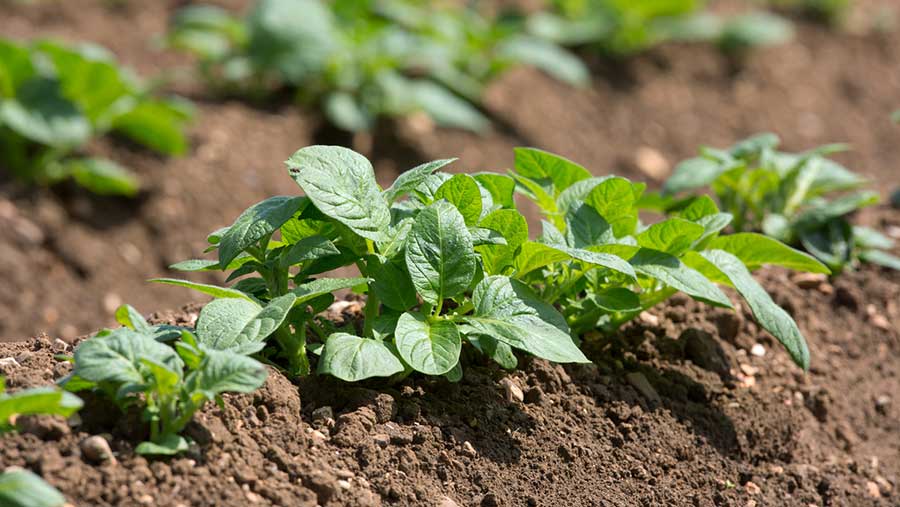Scientists make breakthrough in potato pest control
 © Tim Scrivener
© Tim Scrivener Researchers have developed technology that will help potato growers to better target varietal resistance against the industry’s number-one pest, potato cyst nematode (PCN).
PCN is a significant threat to the UK fresh and processing potato markets, with an annual estimated cost of £50m to the potato industry.
There are two species of PCN that are present in the soils of British potato-growing regions – Globodera rostochiensis and Globodera pallida.
The former has been successfully controlled through the deployment of resistant varieties, but G. pallida remains a significant threat to potato production and is a particular concern for the protection of seed potato land in Scotland.
See also: Critical shortage of key root crop pesticide for 2016
At least three “types” of G. pallida were introduced to the UK with infested plant material from South America and differ in their ability to reproduce on various potato cultivars.
While there are varieties that have strong resistance to all types of G. pallida, such as the processing variety Performer, many so-called G. pallida “resistant” varieties can allow one or more to thrive on their roots.
Using three years of samples taken from the Science and Advice for Scottish Agriculture (Sasa) annual soil surveys, researchers have mapped different population types at scales from whole landscapes to areas within a field with unprecedented accuracy.
It is hoped this will help growers to choose the appropriate potato varieties with the right resistance genetics to counter the type of G. pallida present on their land.
So far, only Scottish soils have been mapped, but it is hoped that the same high-throughput genetic screening will be used to map PCN populations across England and Wales in the near future.
Professor Ian Toth, Controlling Pests and Diseases research theme leader at the James Hutton Institute, commented: “With continued reductions in the availability of nematicides, new sustainable solutions are desperately needed to control these economically important pests.
“This ground-breaking research is the first step towards finding an alternative strategy towards pest control that will ensure a vibrant future for the potato industry as well as affordable and nutritious food on our table.”
This discovery builds on other innovative work by the James Hutton Institute working with Sasa that introduced the first high-throughput molecular screening approach in Europe for PCN surveillance of Scottish soils.
Researchers at the James Hutton Institute, Scottish Agronomy and the Universities of Dundee, Leeds, Edinburgh and St Andrews carried out the project, with funding from the Biotechnology and Biological Sciences Research Council, the Scottish government and the Scottish Society for Crop Research.
Dundee University’s Sebastian Eves-van den Akker, leading author of the study, said: “While developing a method for accurate, quantitative typing of PCN in 1,000 fields simultaneously, we have also revealed insights into the national genetic diversity of an economically important pest.”

